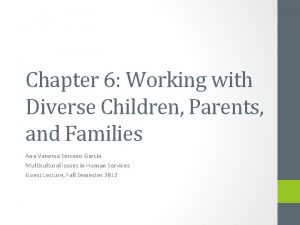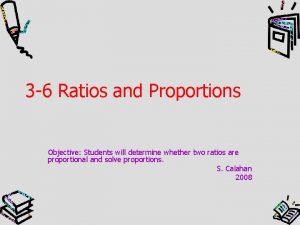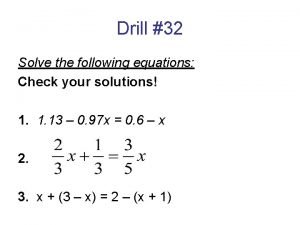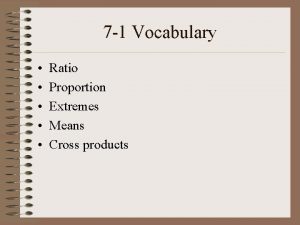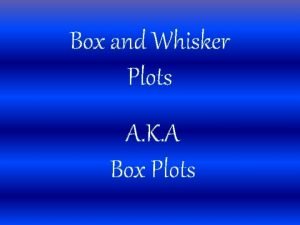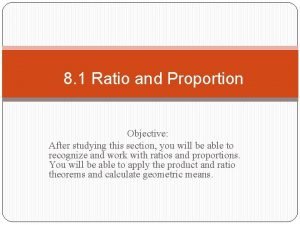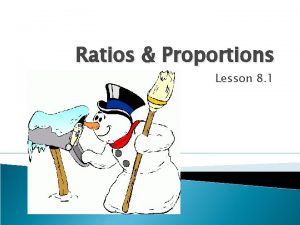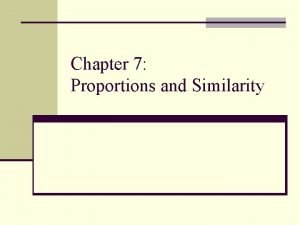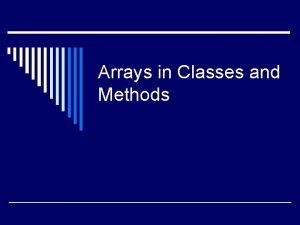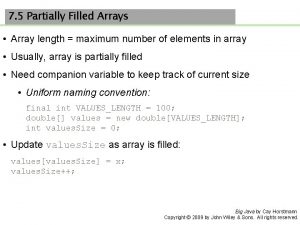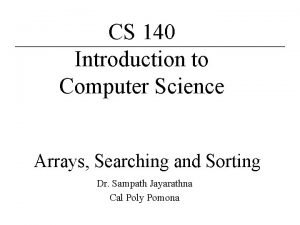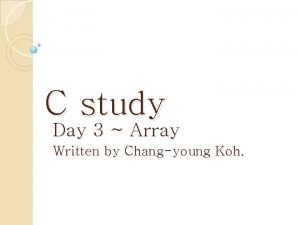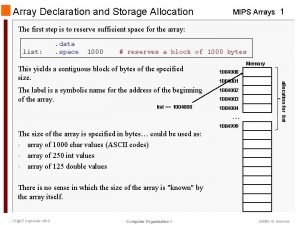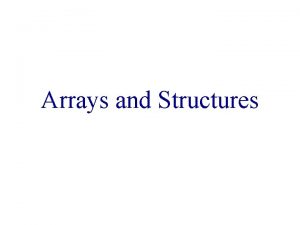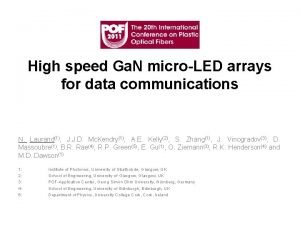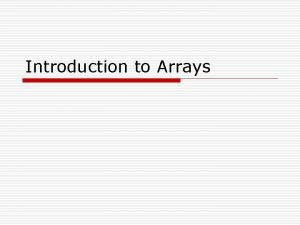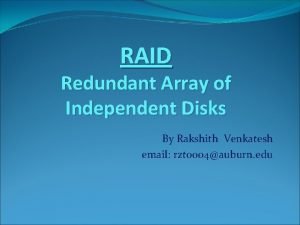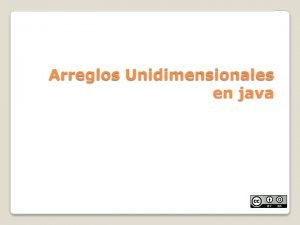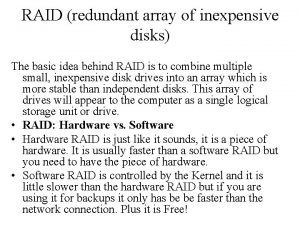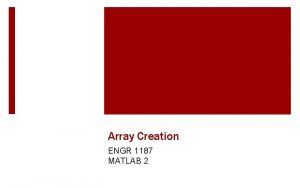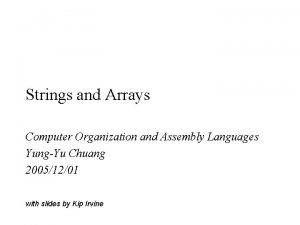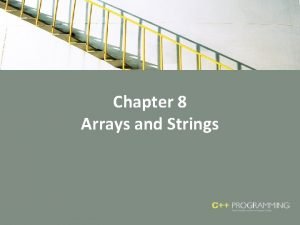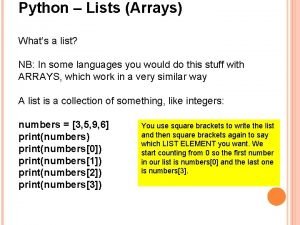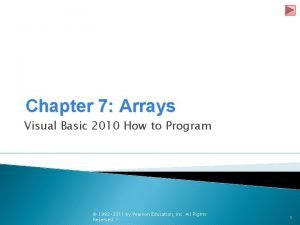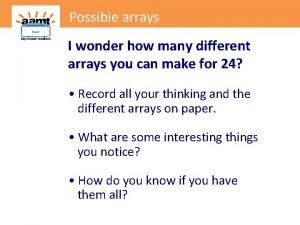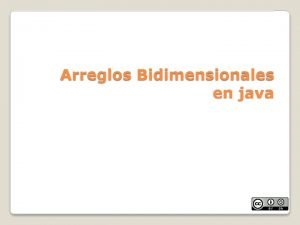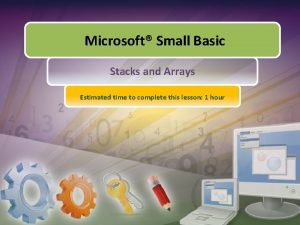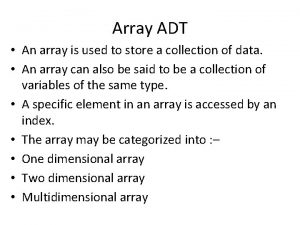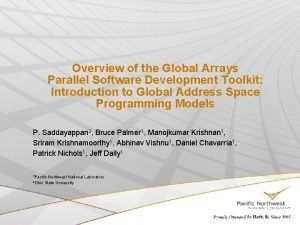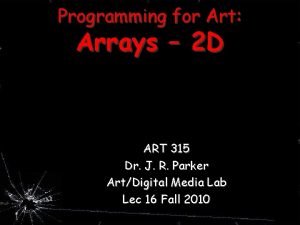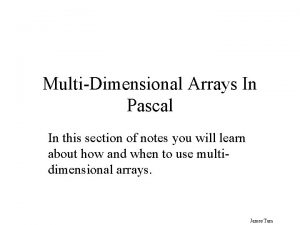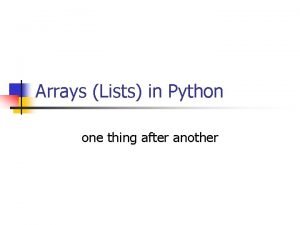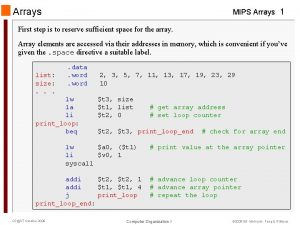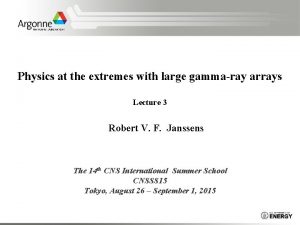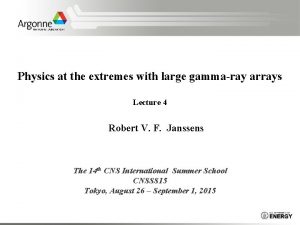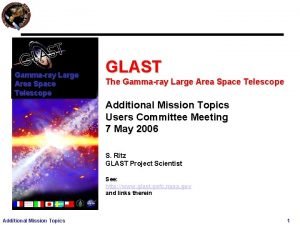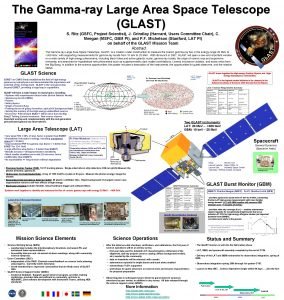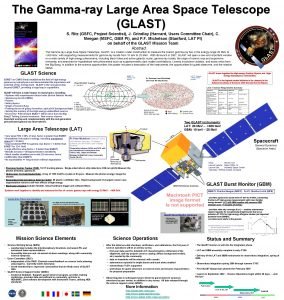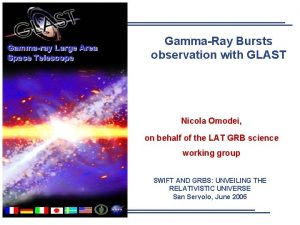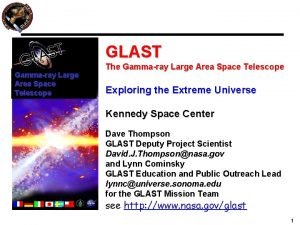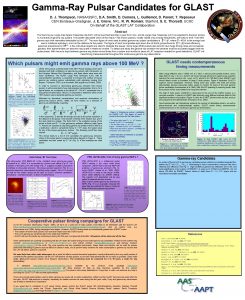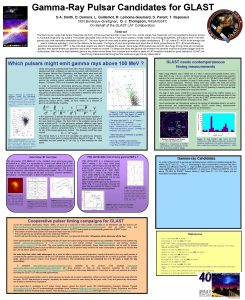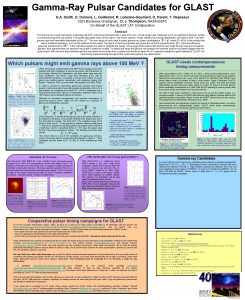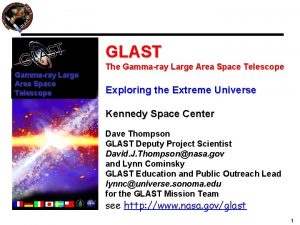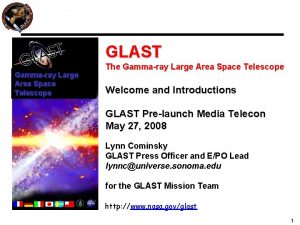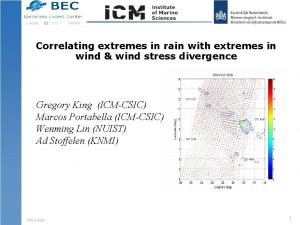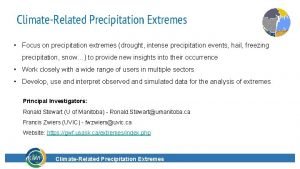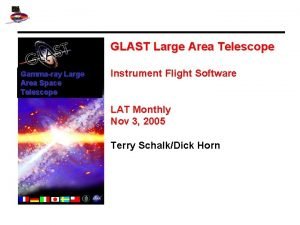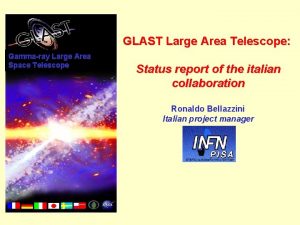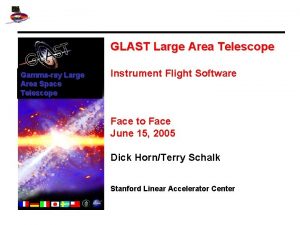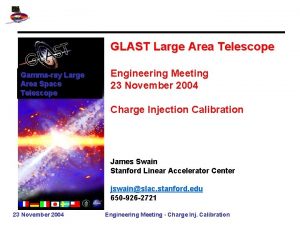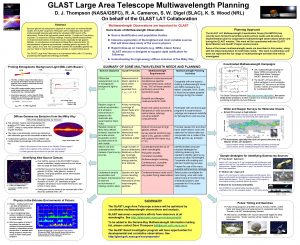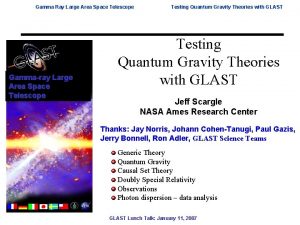Physics at the extremes with large gammaray arrays


















































- Slides: 50

Physics at the extremes with large gamma-ray arrays Lecture 1 Robert V. F. Janssens The 14 th CNS International Summer School CNSSS 15 Tokyo, August 26 – September 1, 2015

Outline: Lecture 1: - Introduction to Gamma-ray Arrays - At the limits of spin Lecture 2: - Spectroscopy at the proton drip line - Spectroscopy of the heaviest nuclei Lecture 3: - Spectroscopy of neutron-rich nuclei Lecture 4: - Spectroscopy of neutron-rich nuclei continued Robert V. F. Janssens CNSSS 15 2

Outline: Lecture 1: - Introduction to Gamma-ray Arrays - At the limits of spin Lecture 2: - Spectroscopy at the proton drip line - Spectroscopy of the heaviest nuclei Lecture 3: - Spectroscopy of neutron-rich nuclei Lecture 4: - Spectroscopy of neutron-rich nuclei continued Robert V. F. Janssens CNSSS 15 3

A bit of History: Na. I(Tl) Robert V. F. Janssens CNSSS 15 Gammasphere Euroball Ge(Li) Small Compton-suppressed array 4

Robert V. F. Janssens CNSSS 15 5

Gamma-Ray Spectroscopy: Times are Changing § A new generation of gamma-ray arrays with tracking capability is (almost) here: AGATA and GRETA. GRETINA AGATA Demonstrator Robert V. F. Janssens CNSSS 15 6

Two decades of large arrays: Motivation: “One area where enormous gains can be made is in RESOLVING POWER (R)” R: The ability to isolate a given sequence of rays from a very complex spectrum. . . Robert V. F. Janssens CNSSS 15 7

Two decades of large arrays: Robert V. F. Janssens CNSSS 15 8

Euroball Array: 15 seven-fold Cluster detectors 30 coaxial detectors 26 four-fold Clover detectors Robert V. F. Janssens CNSSS 15 9

Gammasphere at the ATLAS facility at Argonne National Laboratory Robert V. F. Janssens CNSSS 15 10

Gammasphere: Basic Components Robert V. F. Janssens CNSSS 15 11

Gammasphere: Basic Principle Robert V. F. Janssens CNSSS 15 12

Nuclear Structure at the limits: First Case Limit in Angular Momentum Robert V. F. Janssens CNSSS 15 13

Basic Nuclear Structure from – ray Spectra Collective Rotation Single-Particle Excitation Deformed nucleus rotating about an axis perpendicular to the symmetry axis. Excitation energy and angular momentum are generated by singleparticle excitations from continually changing configurations. Robert V. F. Janssens CNSSS 15 14

vibrations Robert V. F. Janssens CNSSS 15 15

Basics of Rotation axial symmetry: rotational axis symmetry axis for K 1/2: kinematic moment of inertia dynamic moment of inertia j single-particle angular momentum projection of j on symmetry axis R collective angular momentum J total angular momentum K projection of J on symmetry axis I+14 I+12 I+10 rotational frequency I+6 I+4 Robert V. F. Janssens CNSSS 15 E I+8 I+2 I J (2) [ħ 2 Me. V-1] J (2) measures the variation of J (1) rigid rotor: J (2) = J (1) superdeformed 152 Dy ħ [ke. V] 16

Superdeformation: Shell Effects at Large Deformation Single-particle levels for an Harmonic Oscillator potential as a function of elongation Shell gaps at large deformation (2: 1, 3: 1) Single-particle levels for a Woods. Saxon potential (high level density regions are shaded) Shell gaps remain, but not necessarily at 2: 1 or 3: 1 exactly Role of Rotation: deepening of the SD minimum yrast at high spin use fusion-evaporation with heavy ions to generate high spin Robert V. F. Janssens CNSSS 15 17

Superdeformation: Shell Effects at Large Deformation Robert V. F. Janssens CNSSS 15 18

Superdeformation: The Spectrum that helped make the case for the large arrays: 152 Dy P. Twin et al. , PRL 57, 811 In this presentation: answers to SOME of the questions about physics at 2: 1 deformation: - E*(SD), I - Nature of Excitations in SD well Robert V. F. Janssens CNSSS 15 19

Superdeformation: Some fundamentals Experimental Signature of Rotational Bands: Why a picket fence? E(I) ~ I(I+1) E(I+2) ~ (I+2)(I+3) ~ ~ I 2 + I I 2 + 5 I +6 E(I+4) ~ (I+4)(I+5) ~ I 2 + 9 I +20 E(I+6) ~ (I+6)(I+7) ~ I 2 + 13 I + 42 Eg ~ 4 I + 6 Eg ~ 4 I + 14 Eg ~ 4 I + 22 Robert V. F. Janssens CNSSS 15 20

Superdeformation: Shell Effects at Large Deformation Robert V. F. Janssens CNSSS 15 21

Superdeformation: Magic SD Nuclei Lower Frequency at A~190 SD trapping to lower spin Robert V. F. Janssens CNSSS 15 22

Superdeformation: 20 Years Later: SD band is linked 400000 300000 200000 108 Pd(48 Ca, 4 n)152 Dy T. Lauritsen et al. PRL 88, 42501 38 shifts (12 days) Isomer tagging (87 nsec isomer) Robert V. F. Janssens CNSSS 15 23

Superdeformation: 20 Years Later: SD band is linked Robert V. F. Janssens CNSSS 15 24

Superdeformation: 20 Years Later: SD band is linked Highest spin established with certainty thus far To 68+ E* and Ip established Decay mechanism understood T. Lauritsen et al. PRL 88, 42501 Robert V. F. Janssens CNSSS 15 Isomer 25

Superdeformation: The Strength of the Shell Effects Experiment: Lowest State in SD band: I = 24+ E(0+) = 7. 5 Me. V Calculations: Nilsson – Strutinsky Woods – Saxon Relativistic Mean Field 26+ 22+ 24+ Hartree Fock Bogoliubov 24+ 8. 8 Me. V I. Ragnarsson NP A 557, 167 8. 4 Me. V J. Dudek et al. , PR C 38, 940 8. 3 Me. V A. V. Afanasjev et al. , NP A 634, 395 7. 1 Me. V J. L. Egido et al. , PRL 85, 26 Robert V. F. Janssens CNSSS 15 26

Superdeformation: Transition Rates & Quadrupole Moments y x ellipsoid with symmetry axis z electric quadrupole moment with respect to z z x electric charge distribution intrinsic quadrupole moment in the body-fixed frame unit: 1 b = 10 -28 m 2 = 100 fm 2 quadrupole moment and deformation parameter: spectroscopic quadrupole moment observed in the laboratory frame Qs=0 for I=0 ) reduced transition probability unit: 1 e 2 b 2 = 104 e 2 fm 4 lifetime or transition rate Robert V. F. Janssens CNSSS 15 [ps], B(E 2) [e 2 b 2], E [Me. V], conversion coefficient 27

Superdeformation: Lifetimes Doppler shift attenuation method target with backing gamma rays are emitted Ø with full recoil velocity Ø slowed down Ø stopped Lineshape profile characteristic of lifetime Robert V. F. Janssens CNSSS 15 28

Superdeformation: Lifetimes 192 Hg =0. 184 (40) ps, B(E 2) ~2310 W. u. =0. 083 (24) ps, B(E 2) ~2590 W. u =0. 049 (13) ps, B(E 2) ~1930 W. u b 2 ~ 0. 5 E. F. Moore et al. PRL 64, 3127 Robert V. F. Janssens CNSSS 15 29

Superdeformation: Lifetimes Fractional Doppler shifts – F( ) method forward detectors (50º) no Doppler correction E [ke. V] thin target data cos backward detectors (130º) no Doppler correction cos fit average recoil velocity for each transition very fast transitions at the top of the SD band have almost the full initial recoil velocity: F( ) 1 not quite as fast transitions are emitted still within the thin target, but after the recoils have been slightly slowed down, F( ) 0. 9 slower transitions at the bottom of the band ND transitions are emitted after the recoils have left the target, F( ) 0. 8 Ø Extract quadrupole moment by comparing with simulation, including stopping powers. Ø Gives quadrupole moment of the band, not individual lifetimes. Robert V. F. Janssens CNSSS 15 6. 6 eb 5. 9 eb 5. 6 eb 3. 5 eb 8. 0 eb 6. 7 eb 5. 9 eb 3. 5 eb average recoil velocity 0 average initial recoil velocity 30

Superdeformation: Lifetimes 152 Dy B(E 2) ~2660 W. u. b 2 ~ 0. 6 M. A. Bentley et al. PRL 59, 2141 Robert V. F. Janssens CNSSS 15 31

Superdeformation: P. Dagnal et al. , PLB 335, 313 Robert V. F. Janssens CNSSS 15 More SD Bands the SD well sustain many excitations 32

Superdeformation: Nature of the excitations in the SD well P. Dagnal et al. , PLB 335, 313 W. Nazarewicz et al. , NP A 503, 285 Most excitations are understood as quasi -particle excitations dominant role of high-j intruder orbitals “The picture of extreme single particle motion applies, the best example of the application of the shell model at extremes of angular momentum and deformation” Robert V. F. Janssens CNSSS 15 33

Superdeformation: T. Lauritsen et al. , PRL 89, 282501 Collective excitation in the SD well Linking transitions competing with fast E 2 in-band transitions 0. 07% Collective E 1 transitions Calc. : Nakatsukasa et al. 1. 8% PLB 343, 19 (1995) The presence of intruder orbitals (j 15/2 neutrons and i 13/2 protons) near the Fermi surface, close to levels of opposite parity with Dl = 3 (g 9/2 neutrons and f 7/2 protons) results in octupole vibration as favored collective mode Robert V. F. Janssens CNSSS 15 34

152 Dy: A laboratory to study generation of angular momentum Robert V. F. Janssens CNSSS 15 35

Octupole Correlations: Traditional View Octupole correlations originate from the long-range interactions between valence nucleons occupying states with Δj = Δl = 3 In actinide nuclei: Robert V. F. Janssens CNSSS 15 j 15/2 g 9/2 i 13/2 f 7/2 36

Octupole Correlations: Vibrations Signatures: Negative-parity states higher than ground-state band positiveparity states Strong E 1 linking transitions E 1 transitions only from negative-parity states to groundstate band positive-parity states Negative-parity states not necessarily the lowest excitation Note; Coulomb excitation gets to I ~ 30 -35 not a spin limit Robert V. F. Janssens CNSSS 15 37

Octupole Rotation: signatures Signature 1: 1 - energy & hindrance in a decay Robert V. F. Janssens CNSSS 15 38

Octupole Rotation: signatures Signature 2: E 1 “zig-zag” transitions Robert V. F. Janssens CNSSS 15 39

Octupole Rotation: signatures Signature 3: Parity Doublets Robert V. F. Janssens CNSSS 15 40

Octupole Rotation: signatures (I+5)(I+6)+ (I+3)- (I+5)- (I+1)- (I+4)+ (I+3)(I+2)-+ (I+1) I+ S(I) Octupole Deformed Octupole Vibration Signature 4: Energy Staggering Robert V. F. Janssens CNSSS 15 41

Octupole Correlations: Not everything is understood (240 Pu) Experiment: “Unsafe” Coulomb Excitation of 240 Pu with a 208 Pb beam ~ 15% above the barrier Observations: (1) “zig-zag” pattern of E 1 transitions between states of bands 1 (+ parity) and 2 (- parity) at high spin just like in octupole deformed rotors 240 Pu (2) strong E 1 transitions between band 3 (+ parity) and band 2 (- parity). To the best of our knowledge this is a “first”! X. Wang et al. , PRL 102, 122501 Robert V. F. Janssens CNSSS 15 42

From collective rotation to band termination ? J. Simpson et al. , Phys. Lett. B 327, 187 (1994) Robert V. F. Janssens CNSSS 15 43

Feeding of the terminating states The very weak feeding transitions originate from the levels of weakly-deformed, core-breaking configurations. 157 Er 93/2+ 89/287/2 - Evans et. al. , Phys. Rev. Lett. 92, 252502 Robert V. F. Janssens CNSSS 15 44

Evidence for return to collectivity E. S. Paul et al. , PRL 98, 012501 158 Er 157 Er No links to known structure(s) guess on spins I ~ 60? ? Robert V. F. Janssens CNSSS 15 45

Return to collectivity E. S. Paul et al. , PRL 98, 012501 Robert V. F. Janssens CNSSS 15 46

What deformation? TRIAXIAL (positive-gamma) TSD NEAR-AXIAL (Enhanced Deformation) TRIAXIAL (negative-gamma) TSD Robert V. F. Janssens CNSSS 15 47

Doppler Shift (DSAM) Measurement FW 90 O BW X. Wang et al. , PLB 702, 127 Robert V. F. Janssens CNSSS 15 48

Theory vs Experiment TSD 1 ED MEASURED (band 1 s) Qt (eb) 11. 7 (+0. 7, -0. 6) CALCULATED TSD 1 TSD 2 TSD 3 ED 6. 0 – 7. 2 10 – 11. 2 8– 9. 2 6. 7 – 7. 9 158 Er: 157 Er: 10. 9 (+0. 6, -0. 5) THEORY NEEDS WORK STAY TUNEDTSD 2 Qt = Q 0 * cos( +30 O)/cos(30 O); Q 0 = [ 2*(1+ 2/2)+25/33* 42 - 2* 4]*[4/5*(1. 2)2*Z*A(2/3)]/100; Qt is transitional quadrupole moment; Q 0 is intrinsic quadrupole moment; 4 is set to be 0 here; Z is proton number; A is mass number. X. Wang et al. , PLB 702, 127 M E A S U R E D Z O N E TSD 3 M E A S U R E D Z O N E Robert V. F. Janssens CNSSS 15 49

Take-away Message • Large, modern arrays are powerful tools for high-precision nuclear structure studies up to the very limit in spin that nuclei can sustain • Many interesting phenomena occur at high spin: a few examples were given here Superdeformation Octupole vibrations & rotations The demise & return of collectivity Robert V. F. Janssens CNSSS 15 50
 Means and extremes
Means and extremes The ability to produce novel and valuable ideas is called
The ability to produce novel and valuable ideas is called Bicultural couples tend to demonstrate extremes in
Bicultural couples tend to demonstrate extremes in Means and extremes
Means and extremes Means-extremes property of proportion
Means-extremes property of proportion Extremes of a proportion
Extremes of a proportion What is the upper quartile of the data? 3 5 6 8
What is the upper quartile of the data? 3 5 6 8 Avoid extremes
Avoid extremes Similarity ratio definition
Similarity ratio definition Ratio theorem
Ratio theorem Means extremes product theorem
Means extremes product theorem Proportional sides
Proportional sides Facts about arrays
Facts about arrays Disadvantages of dynamic memory allocation in c
Disadvantages of dynamic memory allocation in c Array of arrays c++
Array of arrays c++ Partially filled array
Partially filled array Computer science arrays
Computer science arrays Dynamic arrays and amortized analysis
Dynamic arrays and amortized analysis Day 3: arrays
Day 3: arrays Dynamic array mips
Dynamic array mips Array advantage and disadvantage
Array advantage and disadvantage Polynomial representation using array in c
Polynomial representation using array in c 潘仁義
潘仁義 Microled arrays
Microled arrays Parallel arrays
Parallel arrays Redundant arrays of independent disks
Redundant arrays of independent disks Searching and sorting arrays in c++
Searching and sorting arrays in c++ Ejemplo de arreglo unidimensional en java
Ejemplo de arreglo unidimensional en java A case for redundant arrays of inexpensive disks
A case for redundant arrays of inexpensive disks Creating arrays matlab
Creating arrays matlab Strings in assembly language
Strings in assembly language C++ parallel arrays
C++ parallel arrays Are vectors dynamic arrays
Are vectors dynamic arrays Python list of arrays
Python list of arrays Arrays visual basic
Arrays visual basic I wonder is it possible
I wonder is it possible Arreglo java
Arreglo java Microsoft small basic
Microsoft small basic Parallel arrays in c
Parallel arrays in c Adt of array
Adt of array Global arrays in c
Global arrays in c Why do we need arrays?
Why do we need arrays? Arrays
Arrays Pascal multidimensional array
Pascal multidimensional array Python find index of max
Python find index of max Array mips
Array mips Modern physics vs classical physics
Modern physics vs classical physics University physics with modern physics fifteenth edition
University physics with modern physics fifteenth edition Physics ia format
Physics ia format Lời thề hippocrates
Lời thề hippocrates đại từ thay thế
đại từ thay thế


